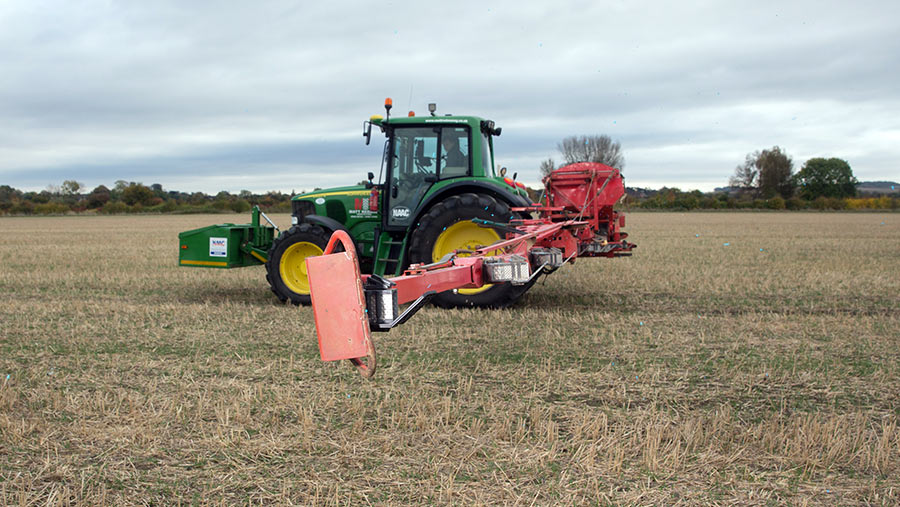Video: Ultimate guide to good slug pellet application
With the fate of metaldehyde in their hands, growers have one final winter to make sure the slug killer doesn’t contaminate watercourses. As a timely reminder, Oli Hill looks at best application practice.
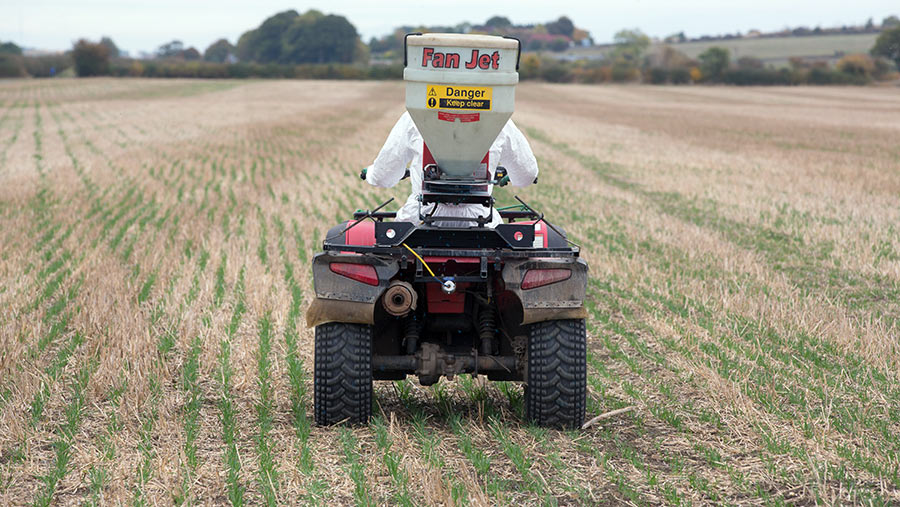
© Tim Scrivener
Quality pellet application is the only way growers can defeat the bumper slug population advancing on crops and reduce the need for follow-up treatments this season, while also protecting the environment.
The clock is ticking down to a major review next March that could see the use of popular slug pellet active metaldehyde restricted or even banned completely.
See also: Video: How to calibrate your slug pellet spreader
Growers must go the extra mile to prove that stewardship and catchment management efforts are making significant contributions towards meeting safe standards for drinking water quality.
New regulations also mean growers must test their slug pellet applicators before 26 November this year to ensure metaldehyde and ferric phosphate slug pellets are being spread evenly and accurately.
Bedfordshire grower and contractor Matt Redman runs through best practice when applying metaldehyde and ferric phosphate slug pellets.
Watch the video tutorial with Mr Redman and then see his tips in full below.
Know what you’re dealing with
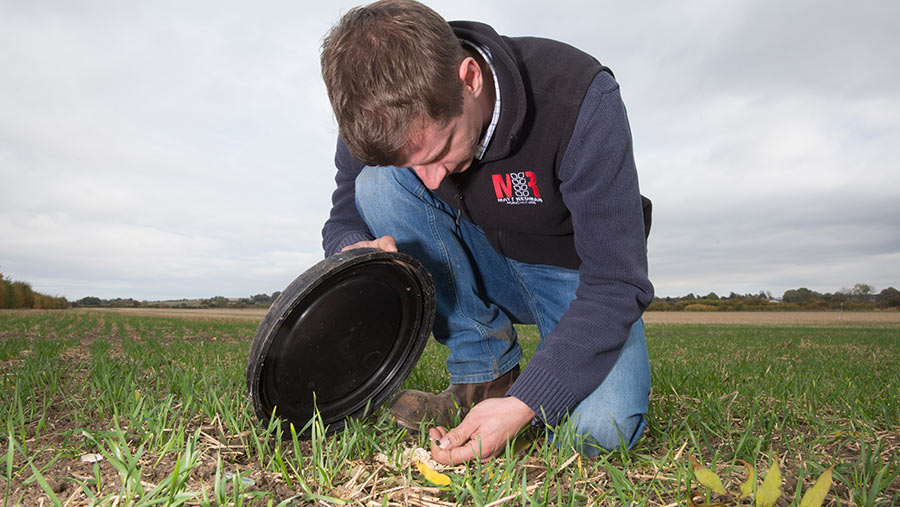
© Tim Scrivener
It is important to treat according to need when dealing with slugs, so before applying any pellets, work out the slug pressure in a field.
Consider whether the field is historically blighted by slugs and what the previous crop was – if it was oilseed rape there might be a higher chance of slug issues. If there are volunteer plants, check them first for damage.
The best way to monitor slugs is to use nine baiting points or traps laid out across the field in a “W” pattern; use 13 baiting points in fields that are larger than 20ha.
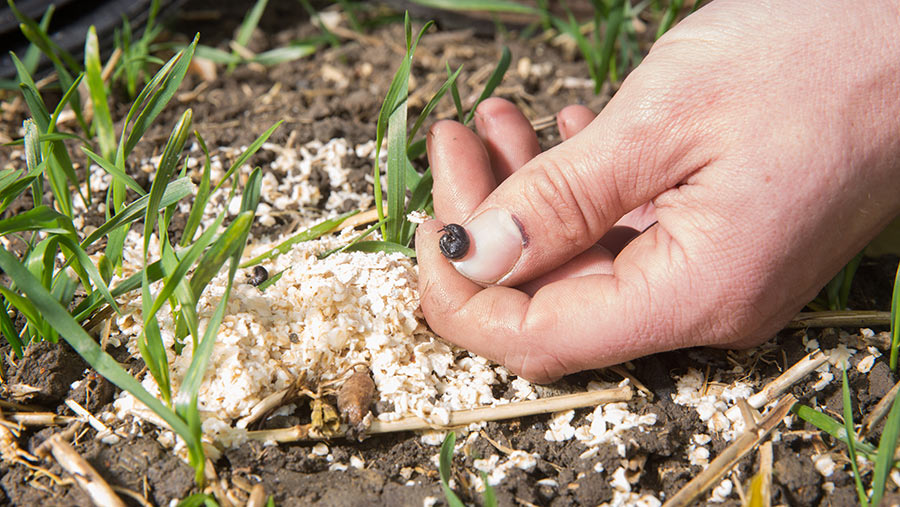
© Tim Scrivener
To make a baiting point, place layers of mash, porridge oats or a wheat-based foodstuff underneath a round bin lid, plant pot saucer or similar that is roughly 25cm in diameter in the field. Do not put slug pellets in the baiting point.
“Leave these overnight and check them early the following morning while the ground is moist and air temperature is cool. Slugs tend to go back underground once it gets warm,” says Mr Redman.
| Crop | Treatment threshold (average number of slugs/baiting point) |
| Winter cereals | 4 |
| Oilseed rape (cereal stubble) | 1 |
| Potatoes | 1 |
| Field vegetables | 1 |
Source: AHDB
Common mistakes
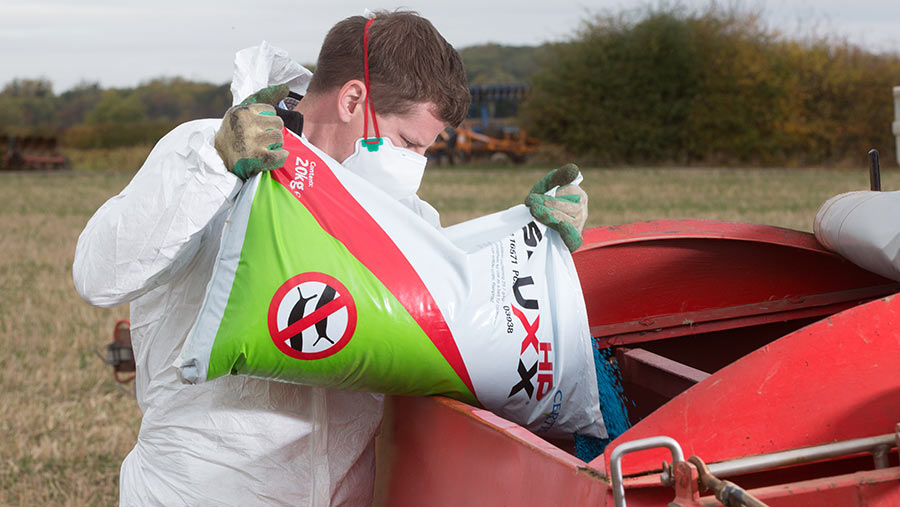
© Tim Scrivener
Mr Redman points out that the most commonly overlooked parts of slug pellet application are often the simplest things, like filling and cleaning spreaders in the field, wearing protective clothing and planning a field route to avoid over- or under-dosing areas.
The best way to apply pellets is to start with the main tramlines, leaving two headland widths around the outside of the field to treat last.
This reduces the risk of pellets being thrown from the rear of the applicator into any nearby watercourses.
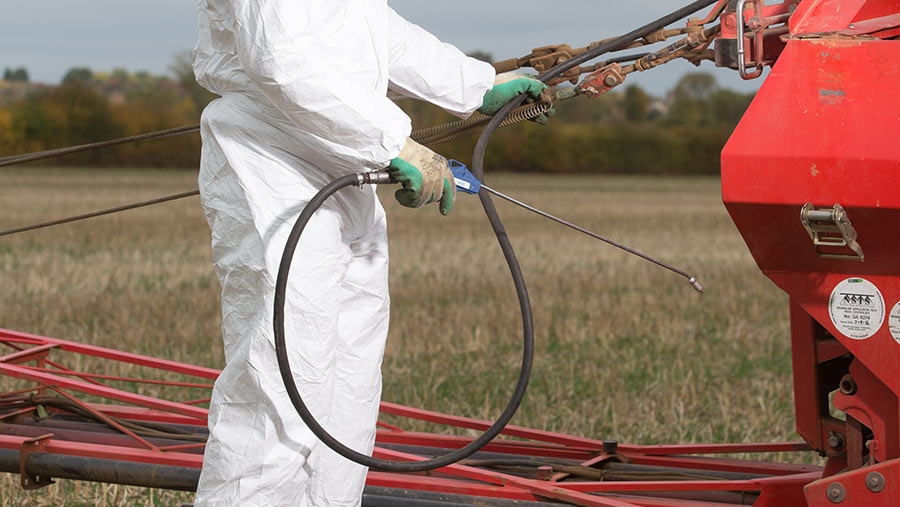
© Tim Scrivener
If using a spinning disc spreader on the back of a quad bike, make sure it is properly calibrated by performing a tray test.
“A spinning disc machine will also throw pellets backwards, so when switching on and off when coming up to headlands we need to allow enough time to make sure we’re not throwing them into the hedge or water.”
Cleaning kit in the field with a stiff brush or air-line, away from headlands, watercourses and gateways will also help mitigate the accidental spread of pellets.
“And the most important thing with slug pellets is to treat them like any other pesticide,” adds Mr Redman.
Video: How to calibrate your slug pellet spreader
Rob Foxall of SCS Spreader and Sprayer Testing gives a step-by-step video tutorial to properly testing and calibrating your slug pellet spreader.
Myth buster: Metaldehyde v ferric phosphate
Ferric phosphate pellets do not kill slugs in the same way that metaldehyde does – this sometimes leads to the misconception that using ferric phosphate is ineffective.
Metaldehyde kills slugs by making them rapidly dehydrate. It is easy to tell if a metaldehyde application has had the desired effect because a quick scout across a treated field will show slimy trails and dead slugs.
In contrast, when slugs ingest ferric phosphate they quickly stop feeding and then burrow deep into the ground to die.
It means there is no visible evidence of death on the soil surface, so growers need to look for a reduction in crop damage in the days after application.
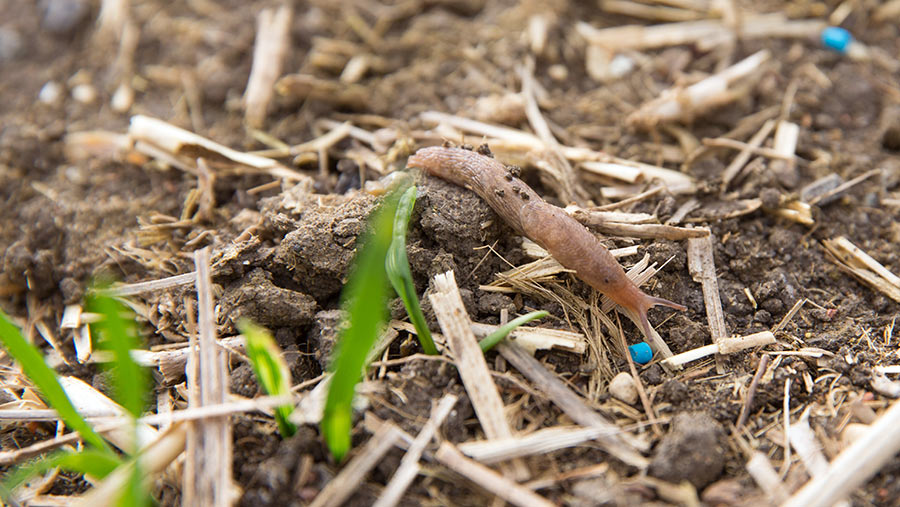
© Tim Scrivener
Precision pelleting
It sounds good, but what does precision pelleting actually mean? Mr Redman explains that it can refer to the application kit used, product choice and timing of application.
While less commonly used than a quad bike, a tractor-mounted pneumatic boom spreader can place pellets more accurately and offers greater control.

© Tim Scrivener
“We are applying across the length of the boom with smaller outlets, which means that we are not trying to throw a pellet 12m,” he explains.
“Over the 24m boom we have four sections of 6m that can be individually switched off, so when we are doing the outside of a field with a buffer zone of 6m we can just switch a section off and carry on round.”
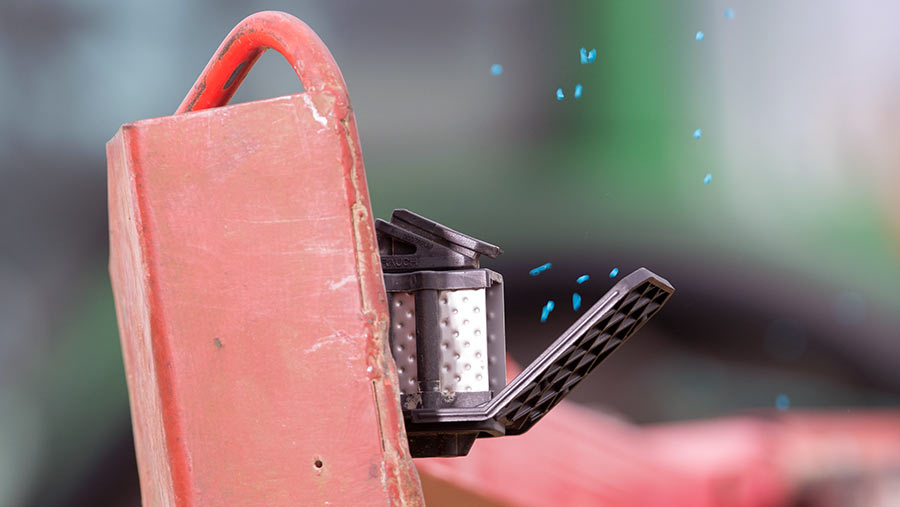
© Tim Scrivener
When it comes to product choice, Mr Redman says a precision pelleting strategy would be to apply metaldehyde in the centre of a field at least 24m from a watercourse and use ferric phosphate on the headlands.
Ferric phosphate products should be applied ahead of forecast heavy rain or where drains are flowing.
© Tim Scrivener
In summary
- 6m buffer zone around all watercourses and ditches if using metaldehyde
- Ferric phosphate does not have buffer zone requirements
- Keep pellets out of field margins – switch off when turning and treat headlands last
- Don’t apply metaldehyde if heavy rain is forecast or leaching and/or run-off is likely
- Maximum metaldehyde doses: 700g/ha active ingredient use/year; 210g/ha between 31 August and 31 December; 160g/ha or less is recommended
- Treat according to need, use bait points to establish slug pressure
- Fill in field, clear up spills, never leave product unattended
- Clean spreader in field away from ditches or roads
- Calibrate applicator for rate and spread pattern
- Users must be trained and must wear protective clothing
- Use minimum dosage/ha to avoid run-off losses
- Make sure spreaders are properly calibrated
- Go to Get Pelletwise for more metaldehyde stewardship details
- Find out if you are in a Drinking Water Protected Area or Safe Guard Zone by entering your postcode into the Environment Agency’s online tool.

